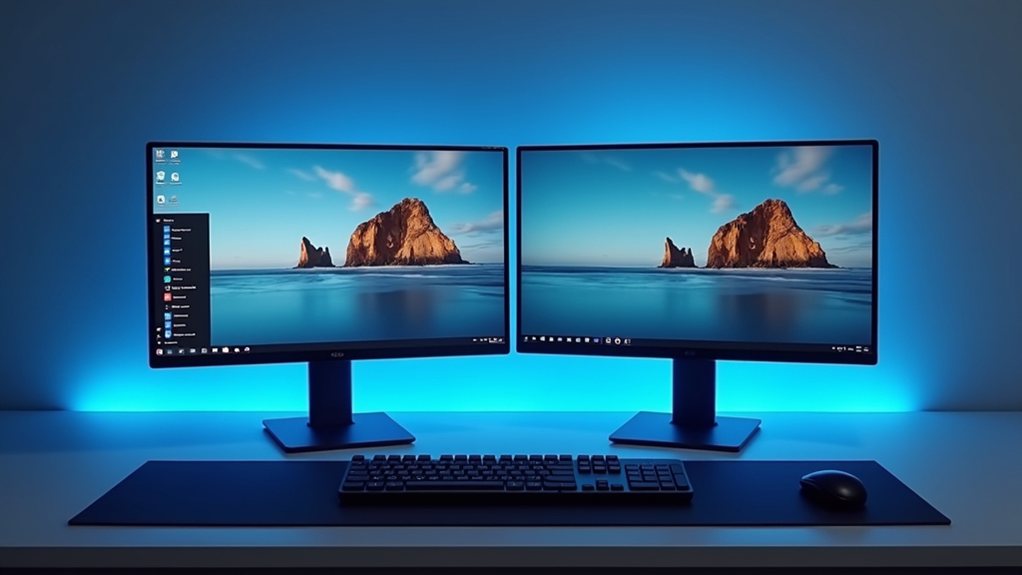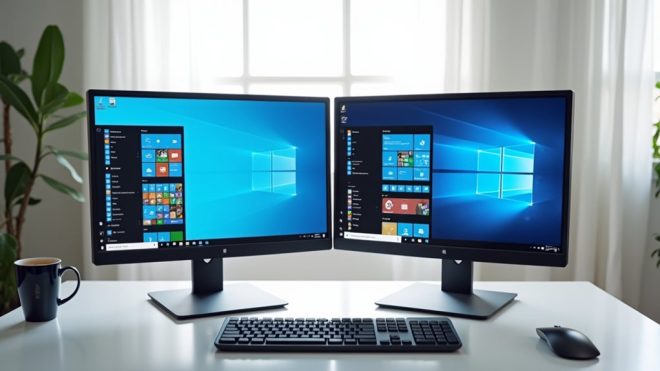Windows 11 has achieved a major milestone, capturing over 50% of the Windows PC market share and outpacing Windows 10 by 6%. This change comes as Microsoft’s October 2025 end-of-support deadline for Windows 10 approaches, driving enterprise adoption to 60%. Nevertheless, hardware compatibility issues affect 25% of current Windows 10 PCs, whereas user resistance remains strong in sectors like healthcare and finance. The shift’s complexity reveals deeper challenges in the Windows ecosystem.

As Windows 11 achieves a historic milestone by surpassing Windows 10‘s market share for the first time in July 2025, Microsoft’s latest operating system finds itself in an unexpectedly tumultuous position. The watershed moment saw Windows 11 claiming over 50% of all Windows PCs, outpacing its predecessor by roughly 6%. Yet, this victory celebration proved short-lived, as August brought an unexpected reversal.
Microsoft’s Windows 11 milestone victory in July 2025 quickly faded as market dynamics shifted unexpectedly the following month.
The path to Windows 11 dominance has been anything but straightforward. Although enterprise adoption shows promising numbers with 60% of business PCs making the switch, consumer uptake remains stubbornly slow, with half of home users still clinging to Windows 10. This digital divide becomes even more pronounced in specific sectors – healthcare organisations are particularly hesitant, with about 60% still running older Windows versions.
The looming October 14, 2025, end-of-support deadline for Windows 10 adds urgency to the shift. Microsoft’s offering of a limited one-year security update extension provides some breathing room, particularly for enterprise users, but it’s merely postponing the inevitable. Users who sign in with a Microsoft account and back up their settings can receive free extended security for an additional year.
The situation becomes more complex when considering that approximately one-quarter of current Windows 10 PCs lack the hardware requirements for upgrading to Windows 11. Technical compatibility remains a vital factor in the upgrade equation. Although 87% of Windows 10 PCs can theoretically make the jump to Windows 11, the remaining devices face obsolescence because of hardware limitations.
TPM requirements, memory specifications, and storage prerequisites create a technical barrier that many ageing systems simply cannot overcome. August 2025’s market share data revealed some peculiar trends that raise eyebrows among tech analysts. Windows 11 experienced an unexpected 4.43% decline, while Windows 10 gained 2.65%. Even more surprising was the modest resurgence of Windows 7, which nearly doubled its share to 3.59% – a digital equivalent of finding a flip phone at a smartphone convention. The recent data from Statcounter shows a complex user redistribution rather than direct switches between operating systems.
These fluctuations suggest that the Windows ecosystem is at a crossroads. Although enterprise environments leverage tools like ControlUp dashboards to manage their transition strategically, individual users appear more resistant to change.
The financial sector‘s 55% Windows 10 retention rate and government’s 39% legacy system usage highlight the challenges Microsoft faces in achieving universal adoption. As the Windows 10 end-of-support deadline approaches, the tech community watches closely to see how this operating system shift will play out.
With application developers gradually phasing out Windows 10 support and security risks mounting for outdated systems, the pressure to upgrade intensifies. Yet, the recent market share variations indicate that the path to Windows 11 dominance might be more winding than Microsoft initially anticipated.
Final Thoughts
The adoption of Windows 11 signifies a major evolution in PC computing, with nearly half of users now utilizing Microsoft’s latest operating system. This trend reflects increasing user confidence as concerns over hardware requirements and interface changes diminish. As Windows 11 continues to enhance its features and optimize performance, its status as the leading desktop OS seems firmly established.
If you’re looking to upgrade or need assistance with Windows 11, the Get Computer Repair team is here to help. Our experts can guide you through the transition and ensure your system runs smoothly. Don’t hesitate to reach out—click on our contact us page to get in touch today!

